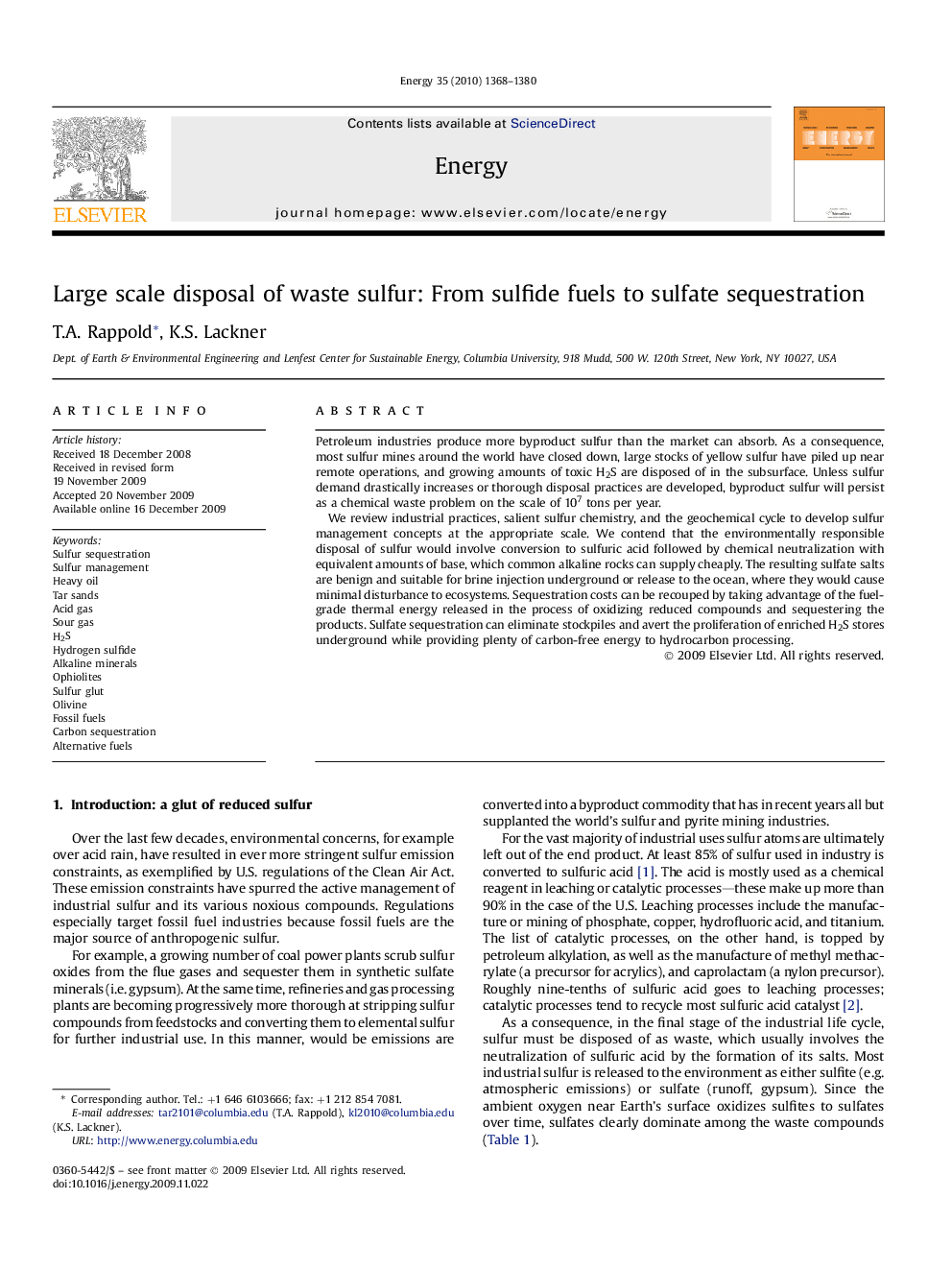| Article ID | Journal | Published Year | Pages | File Type |
|---|---|---|---|---|
| 1735363 | Energy | 2010 | 13 Pages |
Petroleum industries produce more byproduct sulfur than the market can absorb. As a consequence, most sulfur mines around the world have closed down, large stocks of yellow sulfur have piled up near remote operations, and growing amounts of toxic H2S are disposed of in the subsurface. Unless sulfur demand drastically increases or thorough disposal practices are developed, byproduct sulfur will persist as a chemical waste problem on the scale of 107 tons per year.We review industrial practices, salient sulfur chemistry, and the geochemical cycle to develop sulfur management concepts at the appropriate scale. We contend that the environmentally responsible disposal of sulfur would involve conversion to sulfuric acid followed by chemical neutralization with equivalent amounts of base, which common alkaline rocks can supply cheaply. The resulting sulfate salts are benign and suitable for brine injection underground or release to the ocean, where they would cause minimal disturbance to ecosystems. Sequestration costs can be recouped by taking advantage of the fuel-grade thermal energy released in the process of oxidizing reduced compounds and sequestering the products. Sulfate sequestration can eliminate stockpiles and avert the proliferation of enriched H2S stores underground while providing plenty of carbon-free energy to hydrocarbon processing.
